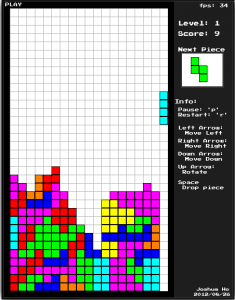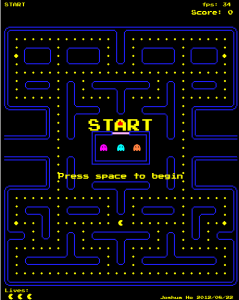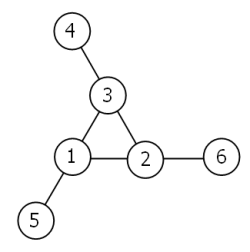Not much to say about this one… after completing Pacman, I had an itch to do tetris.. an old favourite of mine.
Completed it in 2.5 days…
At this rate, I’m definitely going to need to step up my productivity for this if I want to make something comparable to Ludum Dare quality.
(2.5.. as a consolation it only included about 14 hours of coding.)
You can play it here.


